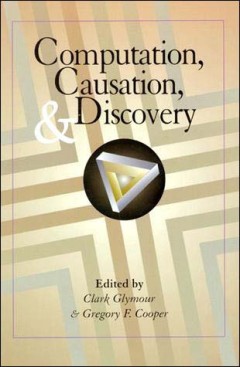Filter by

Computation, Causation, and Discovery
In science, business, and policymaking—anywhere data are used in prediction—two sorts of problems requiring very different methods of analysis often arise. The first, problems of recognition and classification, concerns learning how to use some features of a system to accurately predict other features of that system. The second, problems of causal discovery, concerns learning how to predict…
- Edition
- -
- ISBN/ISSN
- 9780262315821
- Collation
- 1 online resource (xv, 552 pages) :illustrations
- Series Title
- -
- Call Number
- -

The age of prediction :algorithms, AI, and the shifting shadows of risk
The power of the ever-increasing tools and algorithms for prediction and their paradoxical effects on risk. The Age of Prediction is about two powerful, and symbiotic, trends: the rapid development and use of artificial intelligence and big data to enhance prediction, as well as the often paradoxical effects of these better predictions on our understanding of risk and the ways we live. Beginnin…
- Edition
- -
- ISBN/ISSN
- 9780262373203
- Collation
- 1 online resource (208 pages).
- Series Title
- -
- Call Number
- -

The mind's arrows :Bayes nets and graphical causal models in psychology
"A Bradford book."In recent years, small groups of statisticians, computer scientists, and philosophers have developed an account of how partial causal knowledge can be used to compute the effect of actions and how causal relations can be learned, at least by computers. The representations used in the emerging theory are causal Bayes nets or graphical causal models. In his new book, Clark Glymo…
- Edition
- -
- ISBN/ISSN
- 9780262273961
- Collation
- 1 online resource (xv, 222 pages) :illustrations.
- Series Title
- -
- Call Number
- -
 Computer Science, Information & General Works
Computer Science, Information & General Works  Philosophy & Psychology
Philosophy & Psychology  Religion
Religion  Social Sciences
Social Sciences  Language
Language  Pure Science
Pure Science  Applied Sciences
Applied Sciences  Art & Recreation
Art & Recreation  Literature
Literature  History & Geography
History & Geography